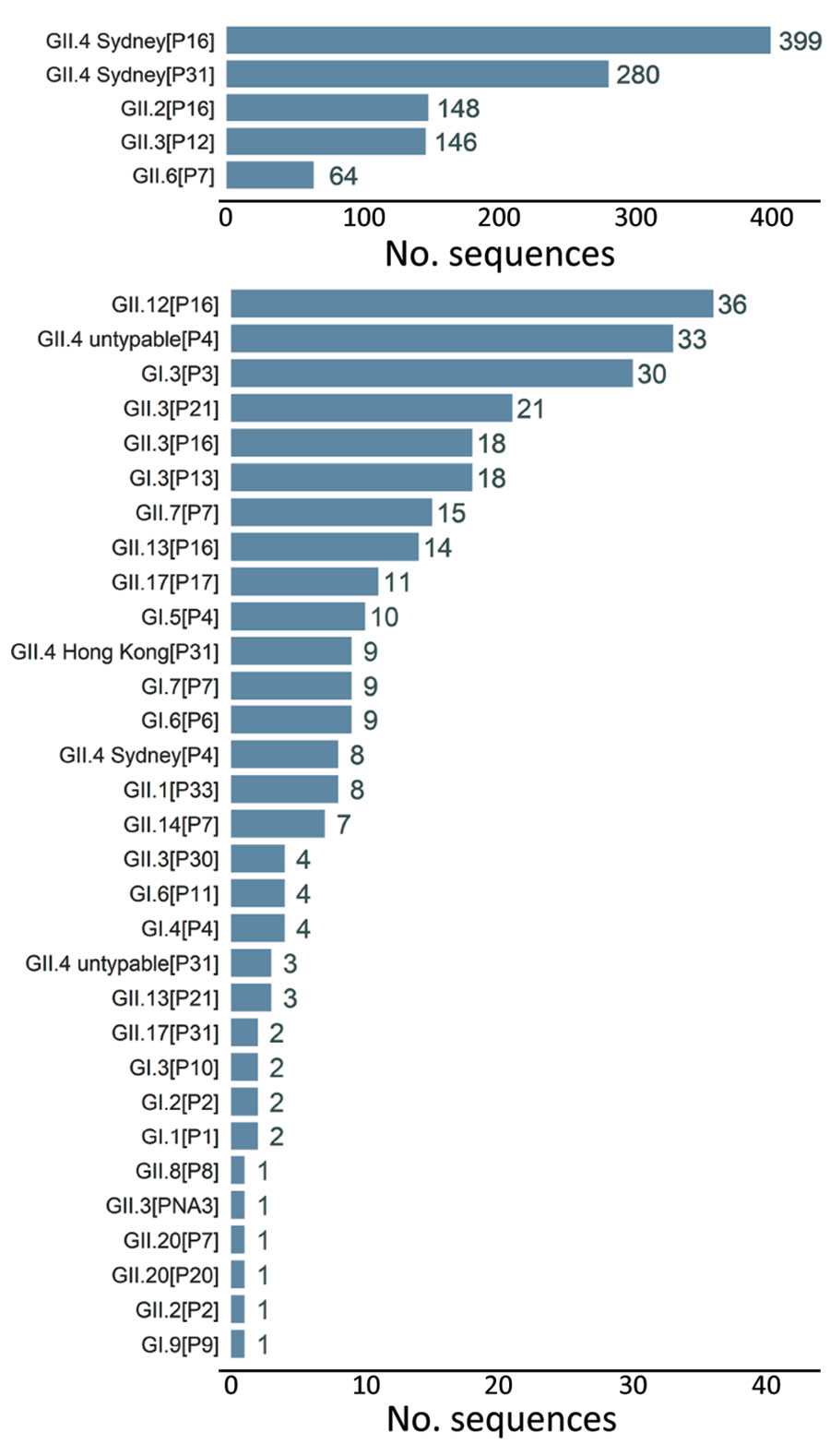Global Trends in Norovirus Genotype Distribution among Children with Acute Gastroenteritis
Jennifer L. Cannon, Joseph Bonifacio, Filemon Bucardo, Javier Buesa, Leesa Bruggink, Martin Chi-Wai Chan
1, Tulio M. Fumian, Sidhartha Giri
2, Mark D. Gonzalez, Joanne Hewitt, Jih-Hui Lin, Janet Mans, Christian Muñoz, Chao-Yang Pan, Xiao-Li Pang, Corinna Pietsch, Mustafiz Rahman, Naomi Sakon, Rangaraj Selvarangan, Hannah Browne, Leslie Barclay, and Jan Vinjé

Author affiliations: National Foundation for the Centers for Disease Control and Prevention, Inc., Atlanta, Georgia, USA (J.L. Cannon, H. Browne); Research Institute for Tropical Medicine, Manila, the Philippines (J. Bonifacio); National Autonomous University of Nicaragua, León, Nicaragua (F. Bucardo); University of Valencia, Valencia, Spain (J. Buesa); Peter Doherty Institute for Infection and Immunity, Melbourne, Victoria, Australia (L. Bruggink); Chinese University of Hong Kong, Hong Kong, China (M.C.-W. Chan); Institute Oswaldo Cruz, Rio de Janeiro, Brazil (T.M. Fumian); Christian Medical College, Vellore, India (S. Giri); Children’s Healthcare of Atlanta, Atlanta (M.D. Gonzalez); Institute of Environmental Science and Research, Porirua, New Zealand (J. Hewitt); Taiwan Centers for Disease Control, Taipei, Taiwan (J.-H. Lin); University of Pretoria, Pretoria, South Africa (J. Mans); University of Antofagasta, Antofagasta, Chile (C. Muñoz); California Department of Public Health, Richmond, California, USA (C.-Y. Pan); Alberta Precision Laboratory, Edmonton, Alberta, Canada (X.-L. Pang); Leipzig University Hospital, Leipzig, Germany (C. Pietsch); International Centre for Diarrhoeal Disease Research, Bangladesh, Dhaka, Bangladesh (M. Rahman); Osaka Institute of Public Health, Osaka, Japan (N. Sakon); Children’s Mercy Hospitals and Clinics, Kansas City, Missouri, USA (R. Selvarangan); Centers for Disease Control and Prevention, Atlanta (L. Barclay, J. Vinjé)
Main Article
Figure 3

Figure 3. Distribution of dual typed sequences in NoroSurv, 2016–2020. Numbers to the right of bars indicate the number of sequences detected for each dual type.
Main Article
Page created: March 09, 2021
Page updated: April 20, 2021
Page reviewed: April 20, 2021
The conclusions, findings, and opinions expressed by authors contributing to this journal do not necessarily reflect the official position of the U.S. Department of Health and Human Services, the Public Health Service, the Centers for Disease Control and Prevention, or the authors' affiliated institutions. Use of trade names is for identification only and does not imply endorsement by any of the groups named above.
